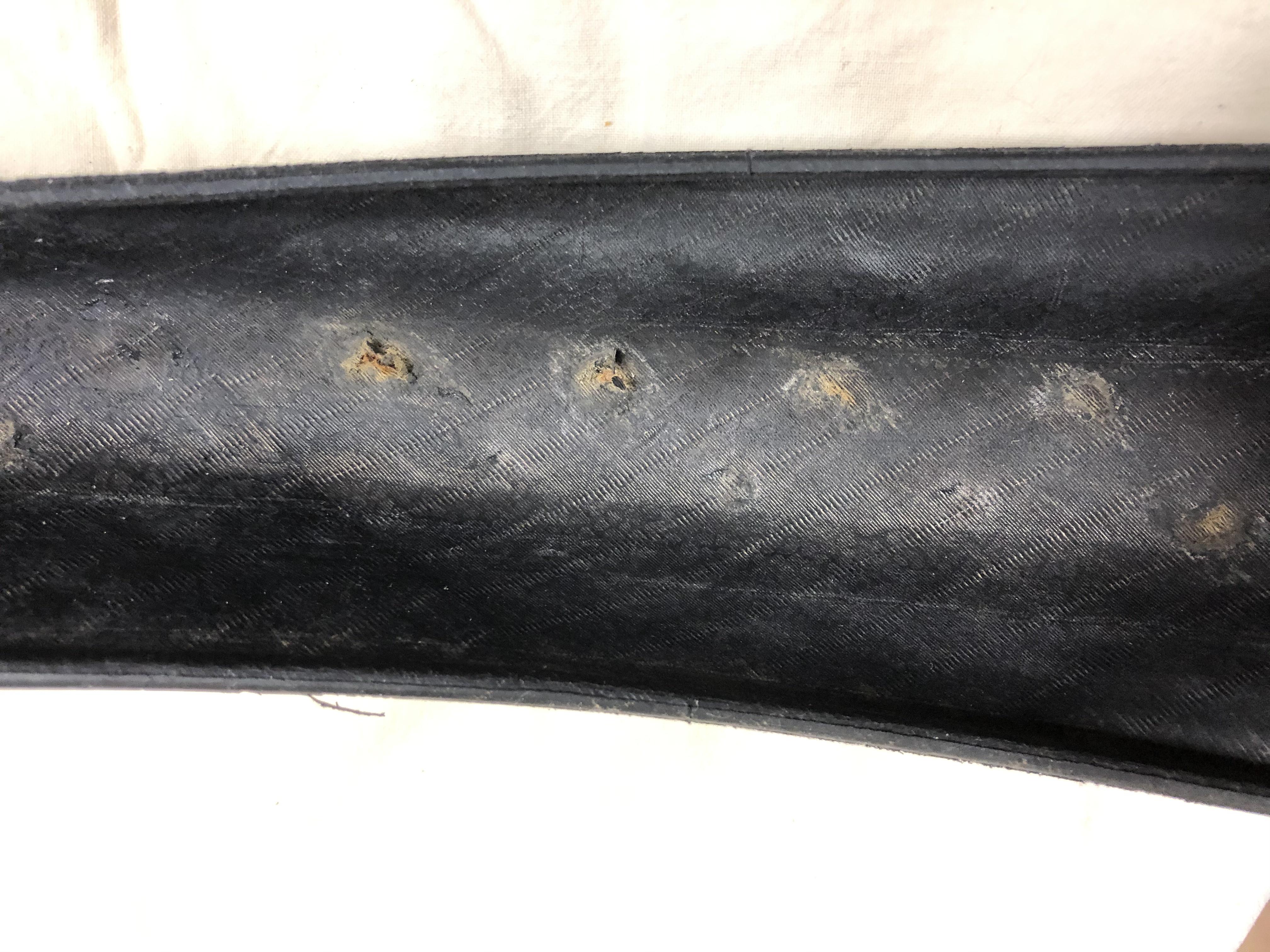Safety info about studded tires
Peter White
Studded Tire Failure Mode?
Studded tires wear out differently than other tires. The studs have flat heads on them, much like roofing nails. The heads are embedded inside the tire tread so you can't see them. But they move a bit with every rotation of the wheel, wiggling back and forth. This movement will eventually damage the fabric tire casing. You can see the damage only when you remove the tire from the rim and look at the tire casing from the inside. This damage takes quite a while to happen. I've not seen a tire damaged by the studs that was used less than 6 years or so. What you'll see when the tire is damaged is crescent shaped cuts in the casing all around the tire. The cuts are being made by the heads of the studs.
If you use one set of wheels year round, and just change from summer tires to studded tires in the late fall, you'll have the opportunity to see the tire casing twice a year. But some people have two sets of wheels; one for summer and the other for winter, so they can go many years without ever seeing the inside surface of the studded tire's casing. This is dangerous, as a casing failure could lead to a blow out. So I recommend that if you leave your tires mounted on rims all year round, every three years or so you remove them and carefully inspect the inside casing of the tires. If you just see some crescent shaped light grey marks in the black casing, don't worry, but start checking them every single year for cuts in the casing. Grey marks are fine, cuts are bad. Once you see cuts in the casing, stop using the tire. It's time for a new one.
Mr. Quindazzi
--
You received this message because you are subscribed to the Google Groups "Bicycle Lifestyle" group.
To unsubscribe from this group and stop receiving emails from it, send an email to bicyclelifesty...@googlegroups.com.
To view this discussion on the web visit https://groups.google.com/d/msgid/bicyclelifestyle/CA%2BD%3DXm8GxPjvzM4fB3h8XLqKa2-7s%2BVnmgH-ynBXeY5EnGaqWg%40mail.gmail.com.
Jon Dukeman
Jon
Steve Weeks
machiya
I'm having a short-person's (47cm) Atlantis built, and that means 26" wheels. I'm keeping the 26" generator-hub wheel from my current clunker of a winter bike (selling it with only 1 wheel?). I'm hoping to leave a studded snow on it and only have to chew up my hands changing a single flesh-ripping rear tire.
Now I know I still have to pay attention to it. Not usually that much snow and ice in Portland, Oregon, and only 1 morning with some frozen fog rime on the road so far this season. Haven't put them on yet.
Steve Weeks
On Tuesday, December 17, 2019 at 9:33:14 PM UTC-6, Steve Weeks wrote:
...After about the second winter of use (in Chicago), I had a flat on the rear wheel. When I fixed it, I discovered what Peter has described.
It seemed to me that the little steel "hats" that hold the carbide inserts were rusting in the salty environment, and the rust particles served as an abrasive paste which accelerated the wear through the tire's carcass.


Todd Spivak
--
You received this message because you are subscribed to the Google Groups "Bicycle Lifestyle" group.
To unsubscribe from this group and stop receiving emails from it, send an email to bicyclelifesty...@googlegroups.com.
To view this discussion on the web visit https://groups.google.com/d/msgid/bicyclelifestyle/5ee6fd89-9e3c-4bfd-96a2-6354bf95b8a0%40googlegroups.com.
